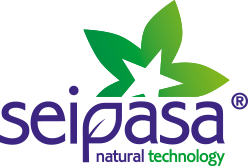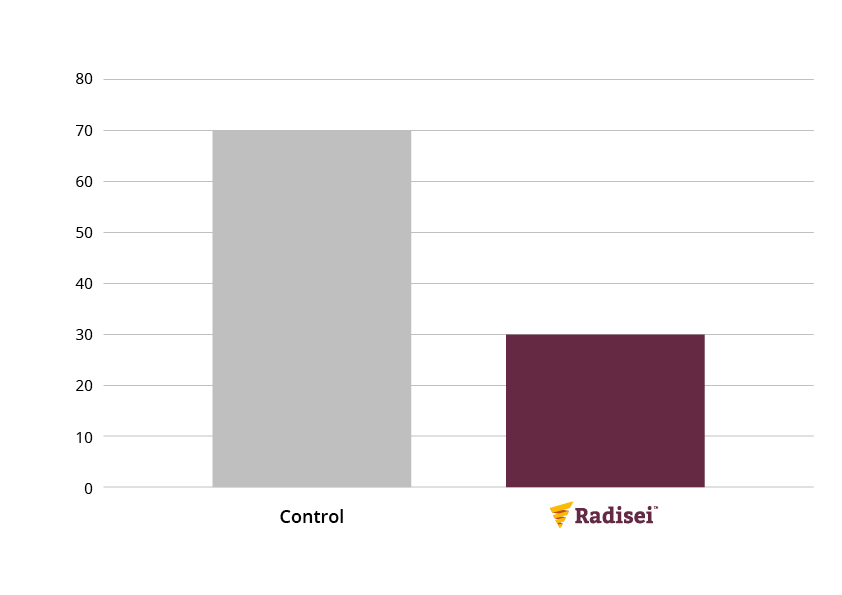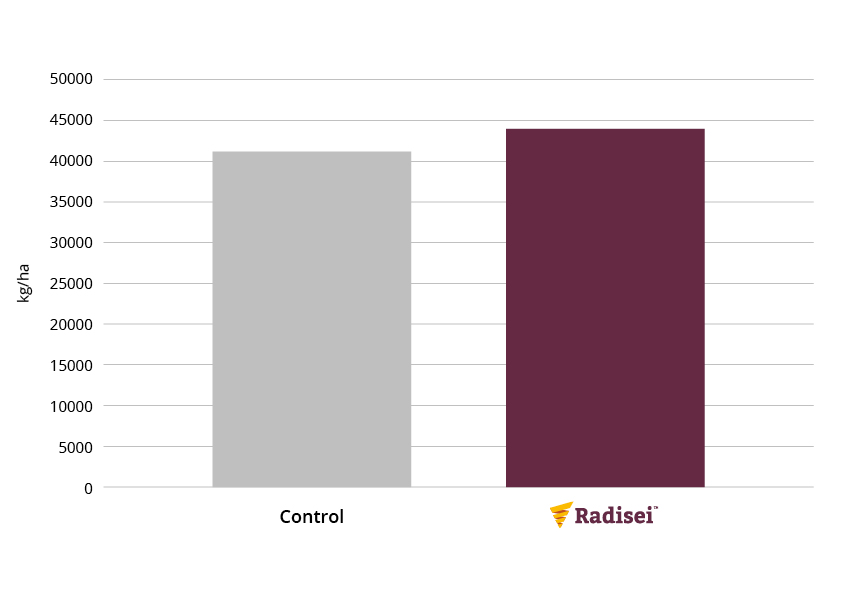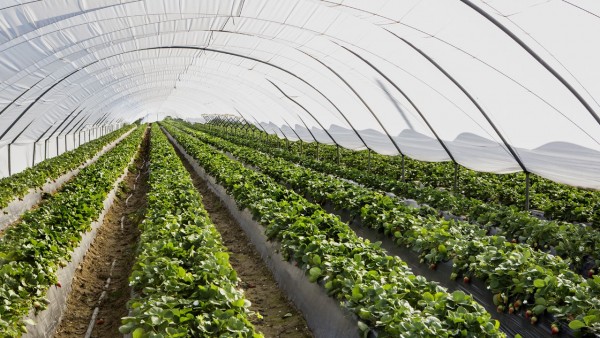Lettuce sowing: keys for optimal crop development
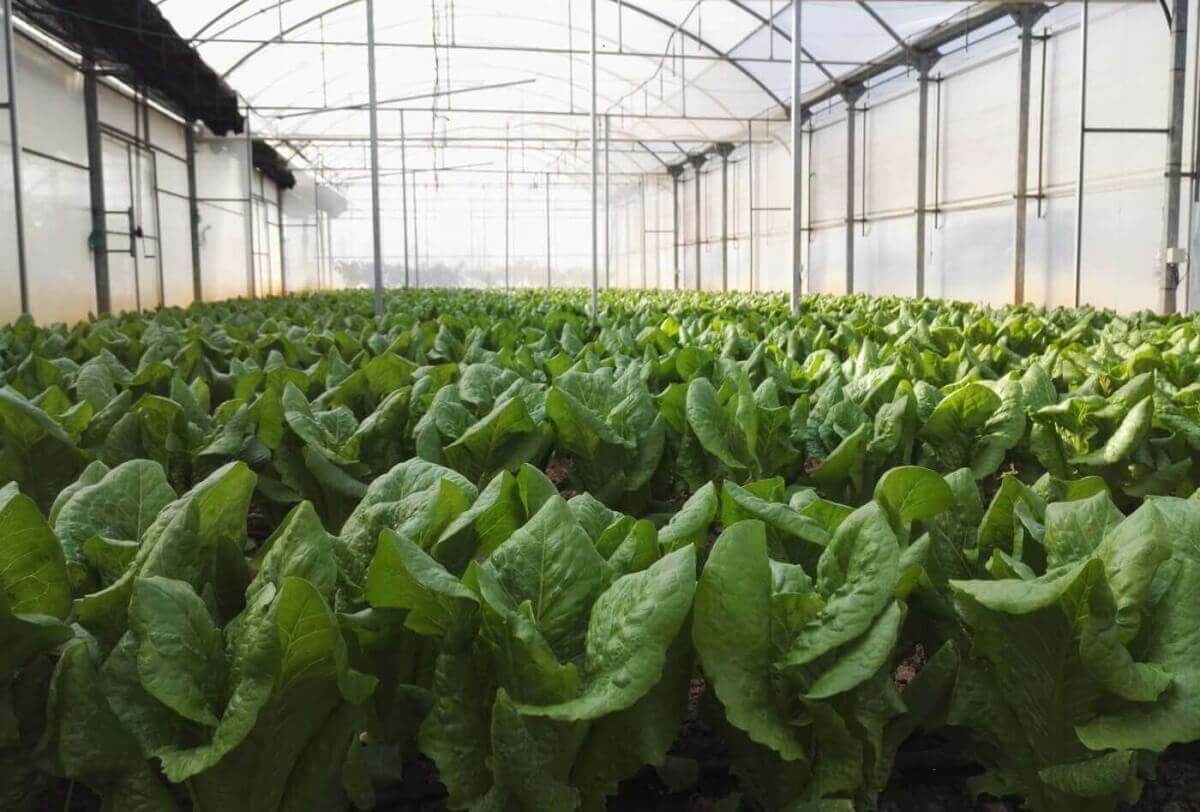
Lettuce can be sowed all year round in the mildest and most temperate climates. We are talking about a highly perennial crop that is produced in a greenhouse and then transplanted into the final soil.
Despite being a relatively simple process, planting lettuce involves stress on the plants due to, inter alia, the change of substrate, environmental conditions and agronomic management.
Such plant stress can lead to the so-called ‘damping-off’, i.e. errors in crop establishment that can lead to reduced production. For this initial phase, Radisei is a Seipasa biostimulant that boosts root development and ensures optimal crop development.
In terms of roots, the lettuce has a shallow and rather reduced root system compared to the aerial part. Accordingly, it is highly sensitive to a lack of humidity and water scarcity.
Lettuce is a crop that prefers a cool climate to develop, particularly in the early stage, which is when it most benefits from the difference in temperature between day and night. Fortunately for growers, seedbed or greenhouse growing conditions greatly expands the range of opportunities, given that it minimizes the incidence of climate factors with the greatest impact on the crop, as well as the presence of pests in these initial stages.
Lettuce planting and transplanting
Sowing lettuce in seedbeds and then transplanting them to the final soil also entails risks, especially due to the stress generated by the plant’s adaptation to a new and inhospitable soil. After transplanting, efforts should be targeted at encouraging rooting and minimizing possible failures in establishment.
At this initial stage, it is advisable to apply Radisei biostimulant, a solution especially designed to unlock the presence of essential micro and macronutrients present in the soil and boost development of the root system. As mentioned above, the action of Radisei helps reduce damping-off in the early development stage after sowing lettuce.
This is shown in graph 1 from the technical trial carried out by Seipasa on the cultivation of Romaine type lettuce. Radisei versus total results shows a 40% reduction in crop establishment failures.
Graph 1: Percentage establishment failures compared to total.
The results of the trial also reveal a more advanced phenology in those plots treated with Radisei, whose plants also showed greater vigour and more intense colouring, as shown in the image at the end of this article.
All these factors contribute to increase the crop yield in terms of production capacity. This can be seen in graph 2, which shows an increase of 2,820 kg/ha (+7%) in those plots treated with Radisei (in the trial there are significant statistical differences with respect to the control).
Graph 2: kg/ha yield in Romaine type lettuce.
Radisei is developed from a unique strain of Bacillus subtilis. This plant growth-promoting rhizobacteria (PGPR) improves the architecture of the root system through the growth of new secondary roots and absorbing hairs.
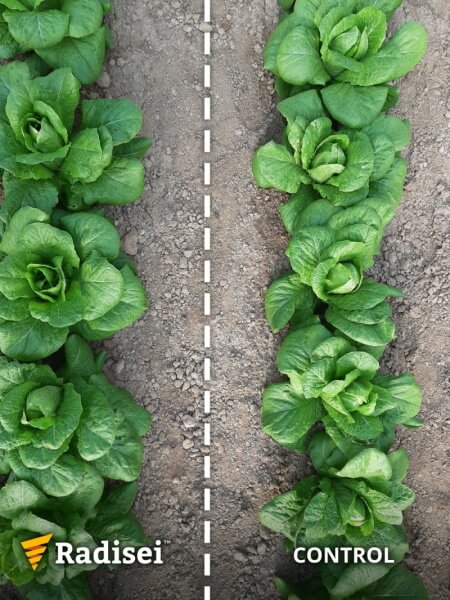 Its method of action in the soil focuses on providing the plant with nutrients immobilized in the soil or in the rhizosphere, given that Radisei acts on potassium solubilization, atmospheric nitrogen fixation and the production of siderophores that allow iron to be delivered to the plant in an assimilable form.
Its method of action in the soil focuses on providing the plant with nutrients immobilized in the soil or in the rhizosphere, given that Radisei acts on potassium solubilization, atmospheric nitrogen fixation and the production of siderophores that allow iron to be delivered to the plant in an assimilable form.
Soil preparation
Sowing or planting lettuce also requires attention to the soil. This requires a nutrient-rich soil, with drainage capacity, loose and not excessively compacted and/or cracked. It is also essential to have a soil as smooth and even as possible, to avoid the stagnation of water from irrigation or rain and the possible appearance of associated diseases.
For soil care and preparation, Seipasa recommends Multisei, a liquid organic fertilizer of high solubility and easy handling that nourishes, stimulates and improves soil structure, composition and microbial activity. Multisei provides the soil with organic matter of the highest quality, helping to improve efficiency in the use of natural resources.
Lettuce is a fairly resistant crop with a high capacity to adapt to the most diverse climatic conditions. Even so, it is advisable to provide the crop with the necessary care and treatments from the initial sowing phase.
